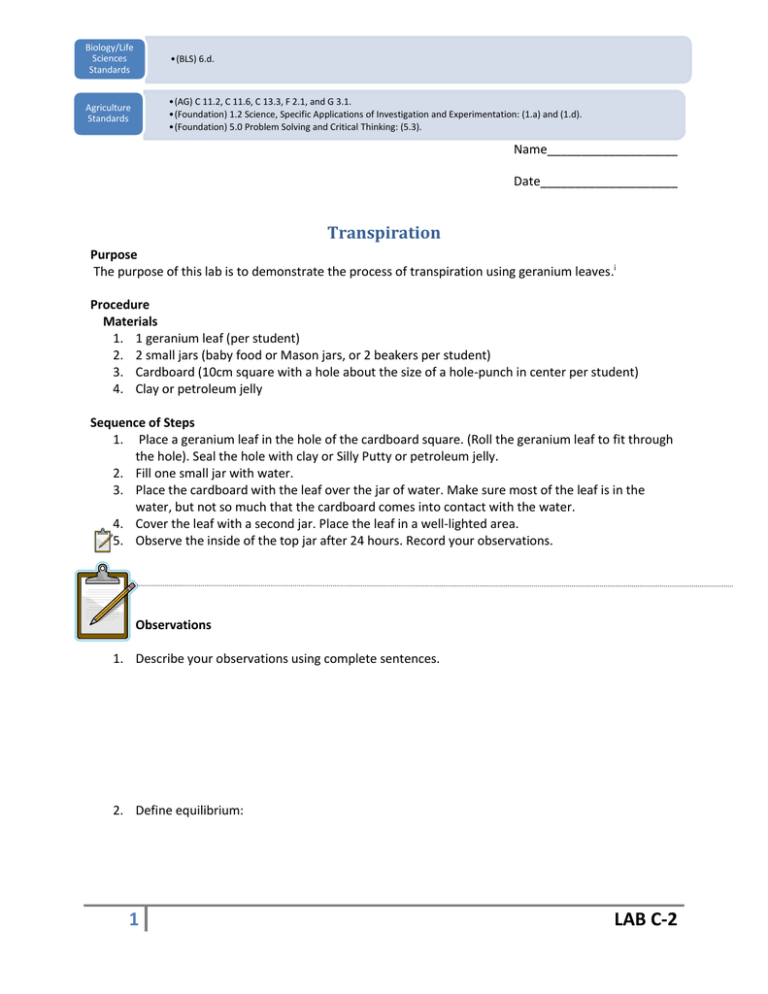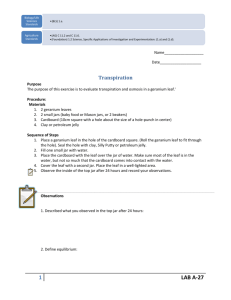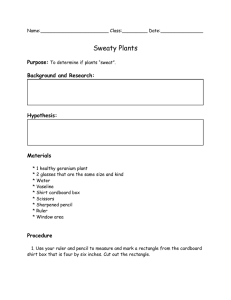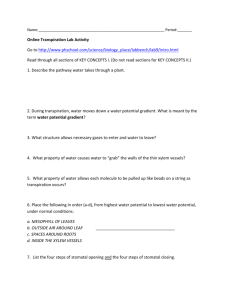C-2 Transpiration
advertisement

Biology/Life Sciences Standards •(BLS) 6.d. Agriculture Standards •(AG) C 11.2, C 11.6, C 13.3, F 2.1, and G 3.1. •(Foundation) 1.2 Science, Specific Applications of Investigation and Experimentation: (1.a) and (1.d). •(Foundation) 5.0 Problem Solving and Critical Thinking: (5.3). Name___________________ Date____________________ Transpiration Purpose The purpose of this lab is to demonstrate the process of transpiration using geranium leaves.i Procedure Materials 1. 1 geranium leaf (per student) 2. 2 small jars (baby food or Mason jars, or 2 beakers per student) 3. Cardboard (10cm square with a hole about the size of a hole-punch in center per student) 4. Clay or petroleum jelly Sequence of Steps 1. Place a geranium leaf in the hole of the cardboard square. (Roll the geranium leaf to fit through the hole). Seal the hole with clay or Silly Putty or petroleum jelly. 2. Fill one small jar with water. 3. Place the cardboard with the leaf over the jar of water. Make sure most of the leaf is in the water, but not so much that the cardboard comes into contact with the water. 4. Cover the leaf with a second jar. Place the leaf in a well-lighted area. 5. Observe the inside of the top jar after 24 hours. Record your observations. Observations 1. Describe your observations using complete sentences. 2. Define equilibrium: 1 LAB C-2 3. What is osmosis? 4. How is this experiment related to osmotic force or turgor? 5. Describe how transpiration plays an important role in the water and oxygen cycles. i Dickson, Chris (2008). Transpiration. North High School, Bakersfield, Agriculture Department 2 LAB C-2





